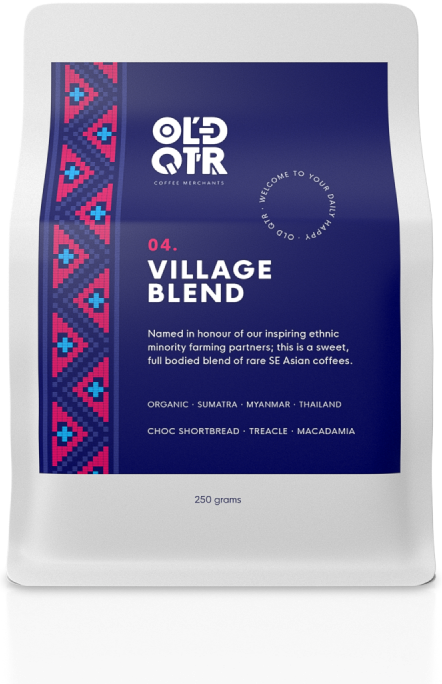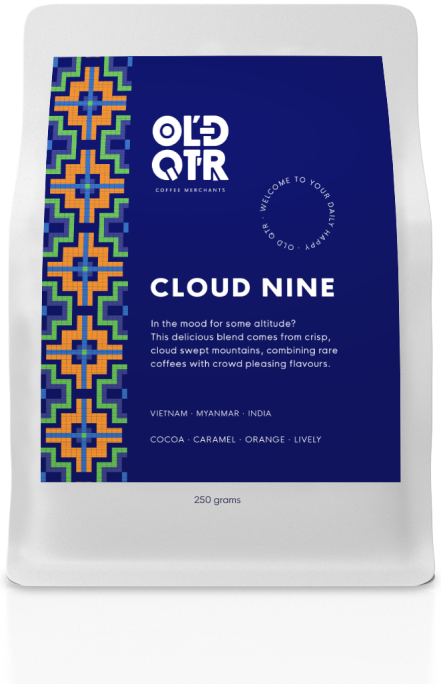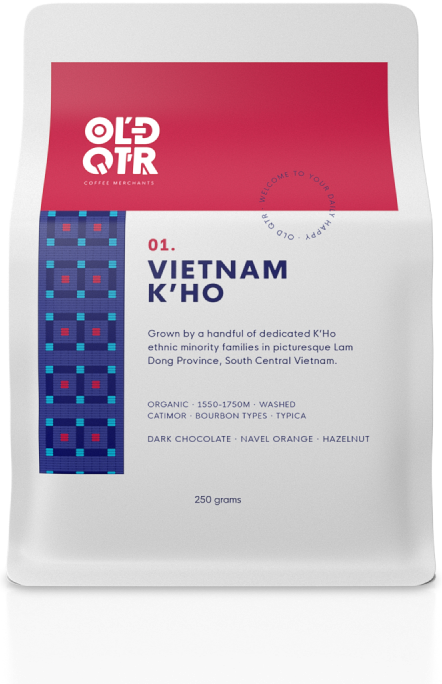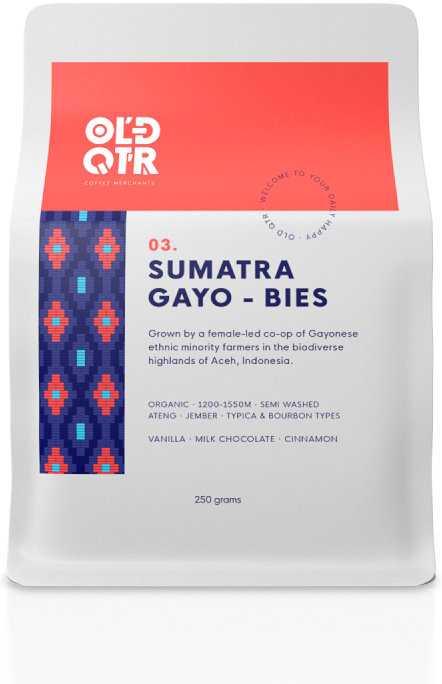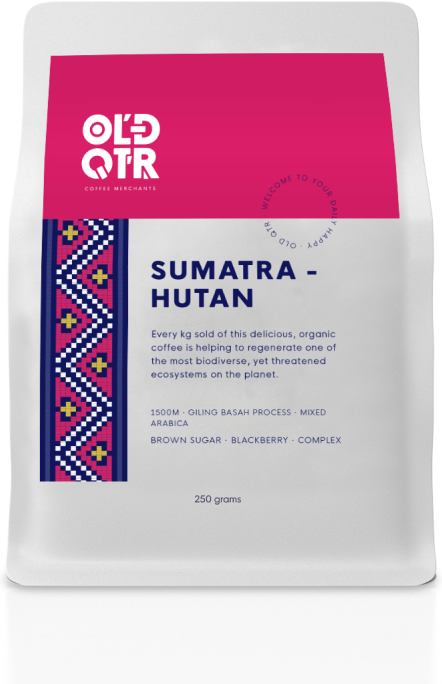Laos Coffee Farm Update
Amy and Yose recently made their first visit to the farmers in Laos who are growing exceptional coffee against huge odds.

When Amy and Yose founded Old Quarter, their plan was to showcase Southeast Asia as a specialty coffee-producing region. Laos was always part of that vision, but it took until 2021 to find great-tasting organic coffee that met their green-bean buying principles.
They found it on the beautiful Bolaven Plateau in southern Laos. Here, 1300m above sea level, a co-op of farmers has spent the last few years learning and developing specialty coffee processing techniques to produce some of the best coffee in Laos – and the world.
Some of the villages on the Bolaven Plateau don’t have ready access to clean drinking water, which makes specialty coffee production extra challenging – and their delicious results extra impressive.
The most common coffee processing method uses a lot of water to ferment and wash the beans. To process without water, the Laos farmers have adopted dry techniques such as natural and honey processing, which involves leaving the whole or partly pulped coffee cherries to dry in the sun before stripping them mechanically. These processes require a lot of hands-on effort as the cherries need to be turned regularly to avoid over-fermentation or mould.
While at Old Quarter we love the flavours produced by these dry processing methods, we wanted to help the farmers who are working so hard to produce our Daily Happy access clean drinking water for their community. So, Amy and Yose hatched a plan to send some love back to Laos.
Old Quarter’s first coffee shipment from Laos became the Laos Good Drop: For every kilo sold of this delicious dry natural coffee, Old Quarter is donating 10% of the proceeds to build a water well for the farmers and their community. We also held a fundraising event at our Ballina café to fast-track the goal of raising $10,000USD. Thanks to the Old Quarter community, we’re well past the halfway mark!

The road to Laos
After many conversations, Amy and Yose were excited to finally meet the Laos farmers in person on their recent trip to the region.
“We wanted to visit to build our relationship with the farmers. It’s all about developing trust,” Amy explains.
Getting to the plateau was an adventure in itself! Travelling from Vietnam, Amy and Yose drove to a relatively new border crossing, passing several checkpoints on each side without seeing any other travellers, to reach this remote area of southern Laos.
“It’s such a new crossing that there’s no public transport, no food, no stores – it’s really only used for trade. We loved it!” Amy shares.
After the bustle of Vietnam, Amy and Yose savoured the slow journey, winding through hot and humid farmland up to the cool rainforest of the Bolaven Plateau, where coffee plants thrive.
“Coffee is a rainforest plant, so the jungle there creates the perfect microclimate for growing coffee,” Yose explains.
Coffee was first introduced to the Bolaven Plateau by French colonists around a century ago, and it quickly became the main crop in the region. While conflict derailed the industry from the 1950s onwards, the plateau has since re-established its position as a premium coffee origin, now exporting around 5000 tonnes of green beans each year.
“The soil is incredibly fertile – it’s all volcanic,” Yose says. “In other areas they’re farming on slopes where there’s a lot of run-off and erosion, but in Laos they’re on a comparatively level plateau, so the soil is super deep. And most of the coffee is shade-grown, which creates a cool, stable environment for the cherries to develop in.”
The farms in and around Paksong, a town on the plateau, are “some of the most beautiful coffee farms I’ve ever seen,” Amy adds, noting that the community’s organic farming methods meant that the plantations they visited were lush ecosystems thriving with birds and insects.

A learning experience
A recent global coffee shortage has created a unique situation for the co-operative. With fewer beans available around the world, the farmers were able to sell their most recent crop of unprocessed cherries directly to international buyers for a high price. While this sounds great, in the long run it can affect farmers’ financial security if they stop investing in specialty processing techniques, as their raw product may not attract such a good price in future seasons.
As Old Quarter works towards building their relationship with the Laos farmers, Amy and Yose hope to prove that they are a reliable client, making it worthwhile for the farmers to continue producing their high-quality honey and dry natural coffees.
With the Laos Good Drop project still in the works, Amy and Yose are now in conversation with the co-op to determine the best way to build a well when the time comes, whether it’s in person or with an NGO partner on the ground.

A taste of Laos
While there are some complex challenges in Laos, the trip to the Bolaven Plateau reinforced Amy and Yose’s commitment to working with the farmers to positively impact their lives as much as they do ours.
You can continue to support Old Quarter’s Optimism Exchange by purchasing the Laos Good Drop coffee or donating directly.
This coffee is seriously delicious, thanks to the dry natural processing technique that results in a syrupy body with rich dark fruit, malt and chocolate biscuit flavours.








